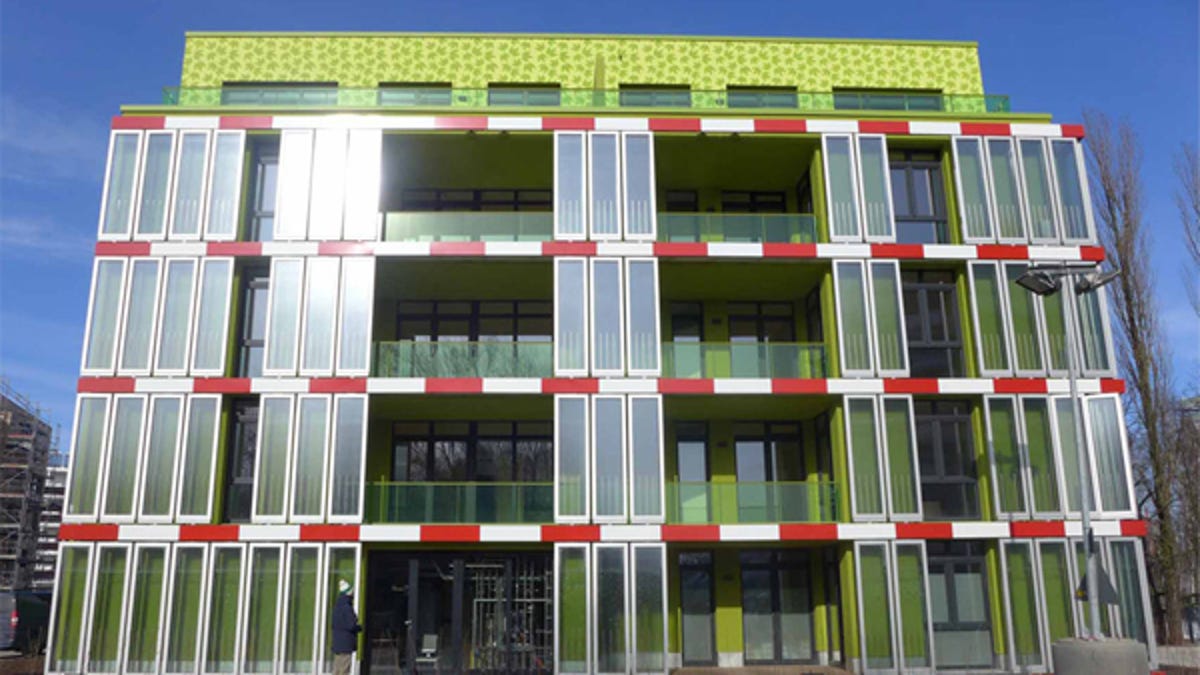BIQ House: World's first building powered by algae
An apartment building powered by algae bio-reactors will open in Hamburg, Germany, at the end of this month.
There's long been speculation and research about algae's potential as a power source. The fast-growing plants waste three-quarters of the sunlight they absorb, so what if that energy could be captured and converted?
That's the premise behind BIQ House, designed by architectural firm Splitterwerk. It's a new algae-powered building that's opening on April 25 as part of the International Building Exhibition (IBA) in Hamburg, Germany. The building's east and south facades are covered in a system of louvres. Filled with microalgae, these louvres form 200 square meters of panels to power the building.
Each of the 129 approximately 8x2-foot panels form a sort of greenhouse environment for the algae, continuously supplied with liquid nutrients and carbon dioxide via a circuit through the facades. With the addition of sunlight, the algae is expected to proliferate, performing a secondary function of providing shade for the building.
When the algae has grown, it will be harvested and transferred to BIQ's technical room. There, it will be fermented and converted into the biogas that will power the apartment building, producing up to five times as much biomass per hectare as land plants.
Splitterwerk is hoping the building will be able to run on nothing but renewable energy. As the first of its kind, BIQ House will also be a subject of study into how well algae can realistically serve as a source of energy.
(Source: Crave Australia via Inhabitat)


